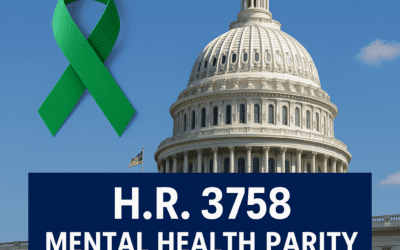The plaintiff in today’s case had been in a serious bicycle accident and suffered cognitive impairments as a result. Gammell v. Prudential Ins.Co. of America, 2007 U.S.Dist.LEXIS 36604 (D.Mass. May 17).
On account of his injuries, Thomas Gammell received benefits through his employer’s group disability insurer, Prudential, from 1989 through 2002; however, benefits were terminated after Prudential’s non-examining doctors concluded that Gammell was not significantly impaired. The plaintiff appealed, but Prudential upheld its determination. A second appeal, submitted in 2004, remained undetermined when suit was filed on October 2006.
That suit, in addition to seeking recovery of benefits in accordance with section 502(a)(1)(B) of the ERISA law, also pled a claim for breach of fiduciary duty under section 502(a)(3). Section 502(a)(1)(B) allows a participant in an employee benefit plan ”to recover benefits due to him under the terms of his plan.” The claim for breach of fiduciary duty invoked section 502(a)(3), which permits a suit ”by a participant, beneficiary, or fiduciary (A) to enjoin any act or practice which violates any provision of this subchapter or the terms of the plan, or (B) to obtain other appropriate equitable relief (I) to redress such violations or (II) to enforce any provisions of this subchapter or the terms of the plan.”
The leading case under section 502(a)(3) is Variety Corp. v. Howe, 516 U.S. 489, 512, 116 S. Ct. 1065, 134 L. Ed. 2d 130 (1996), where the Supreme Court found that section 502(a)(3)’s ” ‘catchall’ provisions act as a safety net, offering appropriate equitable relief for injuries caused by violations that section [1132] does not elsewhere adequately remedy.” However, the court also made it clear that where a claim brought under section 502(a)(1)(B) would provide adequate relief, a second claim asserted under section 502(a)(3) would be duplicative and may not be permitted. Thus, the court struck the plaintiff’s claim under section 502(a)(3).
The court also struck a Gammell’s jury demand. Although the ERISA law is silent as to whether a claim brought under that statute provides for a jury trial, the majority of courts have denied jury trials ”because claims for pension benefits were formerly brought under the law of trusts and are thus equitable in nature. See, e.g., Wardle v. Central States, Se. & Sw. Areas Pension Fund, 627 F.2d 820, 829 (7th Cir. 1980) (‘We conclude that Congress’ silence on the jury right issue reflects an intention that suits for pension benefits by disappointed applicants are equitable. Such suits under the law of trusts have existed for quite a while…. These suits have been considered equitable in nature.’).”
Thus, the court found no right to trial by jury.
The court’s dismissal of the jury trial claim relied on precedent that appears significantly outdated in light of the Supreme Court’s most recent discussions both as to the jury trial right and the distinction between legal and equitable relief under the ERISA statute. See, generally, Donald T. Bogan, ”ERISA: Rethinking Firestone In Light OfGreat-West – Implications For Standard Of Review And The Right To A Jury Trial In Welfare Benefit Claims,” 37 J.Marshall L.Rev. 629 (2004). In Wardle v. Central States, supra., the court rejected the conclusion reached in Stamps v. Michigan Teamsters Joint Council, No. 43, 431 F. Supp. 745 (E.D. Mich. 1977), that the ERISA law does provide for jury trials. Stamps concluded that the specification of equitable relief in section 502(a)(3) meant that claims brought under section 502(a)(1)(B) were legal in nature. Wardle disagreed and ruled that claims brought against the trustees of a pension plan invoked a trust remedy, which was equitable. However, the claim in Gammell involved a suit against an insurer that would unquestionably constitute a claim for breach of contract if the ERISA law did not apply. See, e.g., Cox v. Washington Natl. Insur. Co., 520 S.W.2d 76 (Ct.App.Mo. 1974) (employer sponsored disability benefit claim accorded plenary civil procedure); Antram v. Stuyvesant Life Insur. Co., 287 So.2d 837 (Ala. 1973) (same). Although ERISA abounds with trust law references according toFirestone Tire & Rubber Co. v. Bruch, 489 U.S. 101 (1989), no one can doubt, as pointed out in Van Boxel v. Journal Employees’ Pension Trust, 836 F.2d 1048, 1050 (7th Cir. 1987), that even with pension funds, employee benefit claims arise out of ”contractual entitlements” andFirestone described ERISA’s intent to ”protect contractually defined benefits.” Firestone also held the ERISA law should not afford ”less protection to employees and their beneficiaries than they enjoyed before ERISA was enacted.” As the cases cited above point out, prior to ERISA’s 1974 enactment, claimants enjoyed the right to a jury trial in benefit claims.
Two parallel developments suggest these concepts need to be revisited. Subsequent to Wardle, the Supreme Court issued two rulings clarifying when the right to a jury trial exists. In both Granfinanciera, S.A. v. Nordberg, 492 U.S. 33, 42, 109 S.Ct. 2782, 2790, 106 L.Ed.2d 26 (1989) and in Chauffeurs, Teamsters & Helpers, Local No. 391 v. Terry, 494 U.S. 558 (1990), the Supreme Court held that two factors dictate when the Seventh Amendment guarantees a right to trial by jury. A court first looks to see whether the cause of action resembles an action known to the common law that provided for a trial by jury. Second, the court examines the nature of the relief requested. As to the first point, the issue is easily resolved – claims for breach of contract have traditionally been subject to jury trials.
As to the nature of the remedy, the Supreme Court itself has drawn a distinction between claims for benefits and other equitable claims under ERISA. Great-West Life & Annuity Ins. Co. v. Knudson, 534 U.S. 204, 122 S.Ct. 708, 151 L.Ed. 2d 635 (2002) represents the watershed in that regard. There, in making it clear that claims brought pursuant to section 502(a)(3) allow only equitable relief, the court suggested that claims brought under section 502(a)(1)(B) were legal in nature. Indeed, the court explained, ”[a] claim for money due and owing under a contract is quintessentially an action at law.” At least three district courts have since ruled that the distinction made by Great-West supports allowing ERISA benefit claimants jury trials on their section 502(a)(1)(B) claims. See, Lamberty v. Premier Mill Work and Lumber Co. Inc., 329 F.Supp.2d 737 (E.D.Va. 2004), Bona v. Barasch, 2003 U.S. Dist. LEXIS 4186 (S.D.N.Y. 2003), and Kirse v. McCullough, 2005 U.S.Dist. LEXIS 17032 (W.D. Mo. 2005).
A recent 2d U.S. Circuit Court of Appeals ruling authored by Judge Richard D. Cudahy from the 7th Circuit, sitting by designation, carries on the analysis. In Nechis v. Oxford Health Plan Inc., 421 F.3d 96, 103-04 (2d Cir. 2005), which dismissed an ERISA claim for breach of fiduciary duty involving the denial or mishandling of claims involving chiropractic services on several grounds, including a claim seeking monetary damages, the court remarked:
”A claim for money due and owing under a contract is quintessentially an action at law. The Supreme Court has delineated what forms of equitable restitution are available under section 502(a)(3), distinguishing permissible forms of equitable restitution such as employment of a constructive trust or of an equitable lien from forms of legal restitution. Thus, a constructive trust or equitable lien is imposed when, in the eyes of equity, a plaintiff is the true owner of funds or property, and the money or property identified as belonging in good conscience to the plaintiff [can] clearly be traced back to particular funds or property in the defendant’s possession. For the reasons aptly articulated by the district court, neither form of equitable restitution is involved here; the monies upon which [Alexina] Nechis seeks to impose a trust are premiums paid for health care coverage, which Oxford is under no obligation to segregate and which Nechis does not allege to be segregated in a separate account. Moreover, the language of Nechis’s request for relief involves words of contract rather than those of equity, a circumstance that undermines her claim that the district court misconstrued the nature of the relief that she has sought. Since early on, Nechis has complained that she did not receive the benefit of the bargain and has requested disgorgement of ill-gotten gains and restitution of premiums paid. And she persists in seeking money damages under a theory of unjust enrichment, alleging that ERISA’s remedies must be supplemented by the federal common law since the statute does not provide adequate relief in the present circumstances. We decline this invitation to perceive equitable clothing where the requested relief is nakedly contractual.”
Therefore, as the result of Great-West v. Knudson and developments clarifying the right to jury trial since Wardle was issued more than 25 years ago, there is ample reason to reexamine the question of whether claimants seeking benefits under the ERISA law are entitled to jury trials. Even in those cases that are decided under an arbitrary and capricious standard of review, there is no reason to deny a right to trial by jury. Courts frequently call upon juries to answer special interrogatories, and, as Head v. Lutheran General Hospital, 516 N.E.2d 921 (Ill.App. 1987), represents, upon being instructed as to the meaning of the term ”arbitrary and capricious,” a jury was able to determine whether a physician was improperly denied hospital staff privileges under that standard. There is no reason why jurors could not make the same determination in ERISA claims.
Nor is the treatment of ERISA cases as quasi-administrative law claims a basis for denying jury trials. Many courts view ERISA cases as review proceedings where the court conducts an ”appellate review” of the evidence initially presented to the insurer or plan administrator. Not only is Professor Bogan critical of that approach in the article cited above, but I have also authored two articles critical of the application of administrative law concepts in ERISA cases: ”The Paradox of the Misuse of Administrative Law in ERISA Benefit Claims,” 37 John Marshall Law Review 727 (2004), and ”Disability Insurance Under the ERISA Law: Economic Security or Litigation Nightmare,” 25 J.Insur.Reg. 33 (Spring 2007). Both articles cite Supreme Court and federal appellate precedent for the conclusion that ERISA cases should not be treated as review proceedings and should be treated as plenary proceedings in the same manner as any other civil action.
This article was initially published in the Chicago Daily Law Bulletin.






